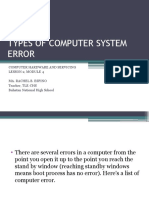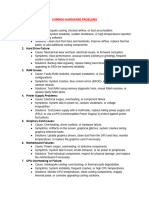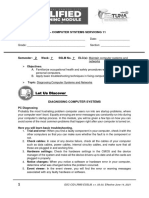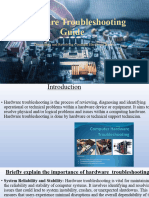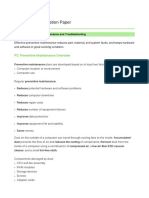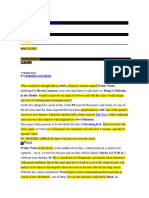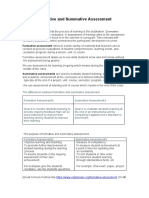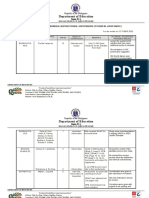0% found this document useful (0 votes)
13 views7 pagesCommon Computer Problems
The document provides step-by-step procedures for troubleshooting common computer problems, enhancing users' ability to solve issues independently and efficiently. It covers various categories, including power and boot problems, performance issues, system errors, network problems, hardware issues, software problems, storage issues, and maintenance tips. Each section includes specific troubleshooting steps to address typical scenarios, promoting confidence and problem-solving skills among users.
Uploaded by
Mike Y. AquinoCopyright
© © All Rights Reserved
We take content rights seriously. If you suspect this is your content, claim it here.
Available Formats
Download as DOCX, PDF, TXT or read online on Scribd
0% found this document useful (0 votes)
13 views7 pagesCommon Computer Problems
The document provides step-by-step procedures for troubleshooting common computer problems, enhancing users' ability to solve issues independently and efficiently. It covers various categories, including power and boot problems, performance issues, system errors, network problems, hardware issues, software problems, storage issues, and maintenance tips. Each section includes specific troubleshooting steps to address typical scenarios, promoting confidence and problem-solving skills among users.
Uploaded by
Mike Y. AquinoCopyright
© © All Rights Reserved
We take content rights seriously. If you suspect this is your content, claim it here.
Available Formats
Download as DOCX, PDF, TXT or read online on Scribd
/ 7








